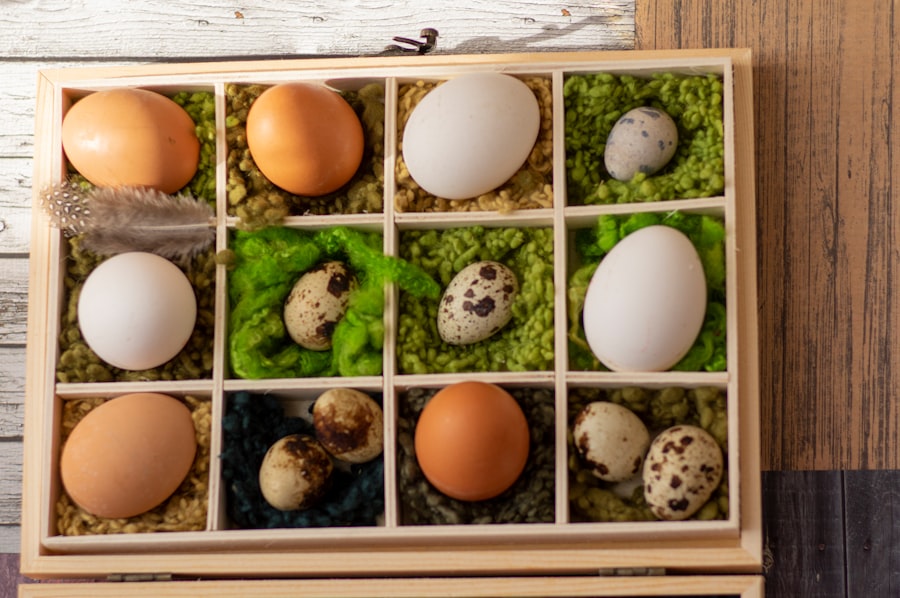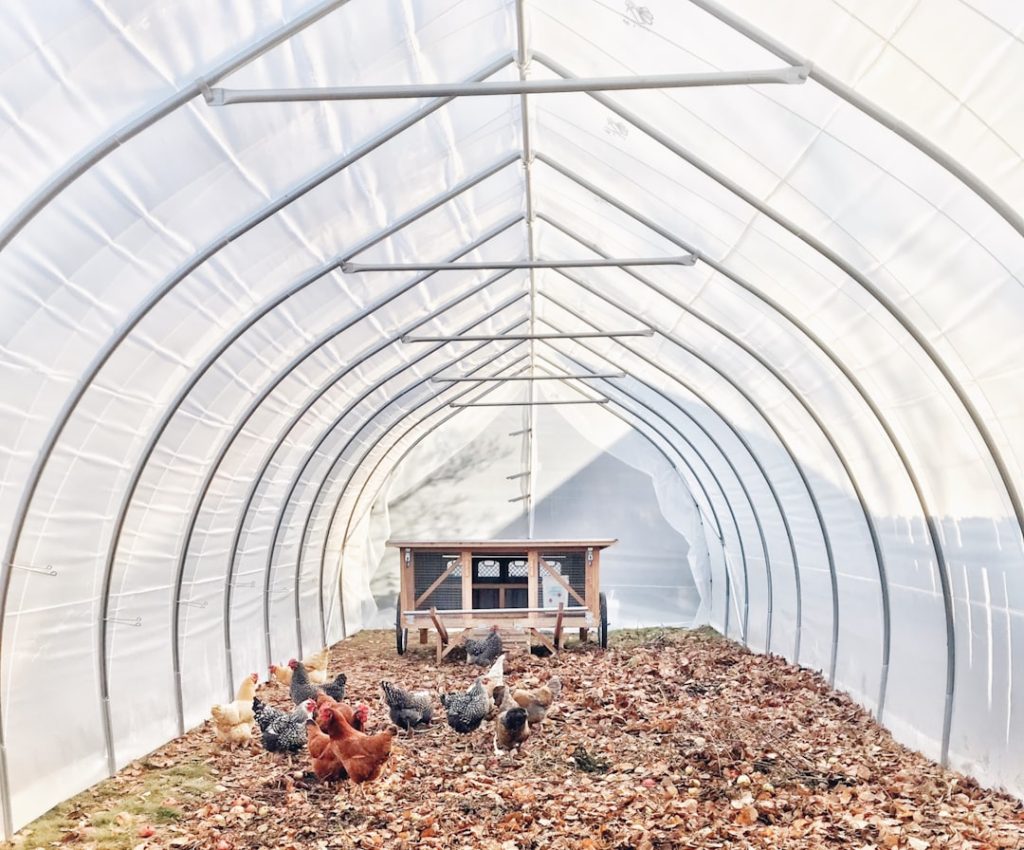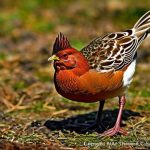Hawks are diurnal raptors renowned for their exceptional vision and predatory skills. These birds are attracted to areas with abundant small prey, including chickens. Hawks primarily hunt during daylight hours, targeting small mammals and birds.
They exhibit territorial behavior, defending their hunting grounds from other hawks and potential competitors. Understanding hawk behavior is essential for developing effective chicken protection strategies. Hawks are opportunistic and stealthy hunters, often employing surprise attacks to catch prey unaware.
Their persistence in pursuit of targets is a notable characteristic. This knowledge enables chicken owners to implement various deterrent methods, such as physical barriers, visual and auditory deterrents, creating secure enclosures, and supervising free-range periods to safeguard their flocks from hawk predation.
Table of Contents
- 1 Implementing Physical Barriers
- 2 Using Visual Deterrents
- 3 Installing Sound Deterrents
- 4 Creating Safe Areas for Chickens
- 5 Supervising Free-range Time
- 6 Seeking Professional Help
- 7 FAQs
- 7.1 What are some effective methods for keeping hawks from eating chickens?
- 7.2 Are there any natural deterrents for hawks?
- 7.3 What should I do if I spot a hawk near my chicken coop?
- 7.4 Are there any legal methods for deterring hawks from preying on chickens?
- 7.5 What are some signs that a hawk has been preying on my chickens?
Key Takeaways
- Hawks are opportunistic predators and are attracted to areas with easy access to prey, such as chicken coops.
- Physical barriers like netting or fencing can help prevent hawks from accessing chicken coops and harming the birds.
- Visual deterrents like scarecrows, reflective tape, or predator decoys can help deter hawks from approaching chicken coops.
- Sound deterrents like motion-activated alarms or radios can help scare off hawks from chicken coops.
- Creating safe areas for chickens to hide, such as dense shrubbery or covered shelters, can provide protection from hawks.
Implementing Physical Barriers
Physical Barriers: A First Line of Defense
One effective way to protect chickens from hawks is by implementing physical barriers around the chicken coop and run. This can include using wire mesh or netting to cover the top of the chicken run to prevent hawks from swooping down and catching the chickens. Additionally, installing a fence around the perimeter of the chicken coop can also help deter hawks from entering the area.
Securing the Barriers
It’s important to ensure that the physical barriers are secure and properly installed to prevent any gaps or weak spots that hawks could exploit.
Scarecrows and Decoys: Adding an Extra Layer of Protection
Another physical barrier that can be effective in deterring hawks is the use of scarecrows or decoys. Placing scarecrows or decoy predators, such as owls or other birds of prey, around the chicken coop can help create the illusion of a dangerous environment for hawks, causing them to think twice before attempting to hunt in the area.
Creating a Safer Environment
By implementing these physical barriers, chicken owners can create a safer environment for their chickens and reduce the risk of hawk attacks.
Using Visual Deterrents

In addition to physical barriers, using visual deterrents can also help deter hawks from targeting chickens. One effective visual deterrent is the use of reflective objects, such as shiny tape or CDs, around the chicken coop and run. The reflective surfaces can create a disorienting effect for hawks, making it difficult for them to accurately target their prey.
Another visual deterrent that can be effective is the use of scare balloons or kites that resemble predators, such as owls or eagles. These visual deterrents can create the illusion of a dangerous environment for hawks, causing them to avoid the area. Another visual deterrent that can be effective in deterring hawks is the use of motion-activated lights or sprinklers.
These devices can startle hawks when they approach the chicken coop or run, causing them to flee the area. By using visual deterrents, chicken owners can create a hostile environment for hawks, reducing the likelihood of attacks on their chickens.
Installing Sound Deterrents
Sound deterrents can also be effective in deterring hawks from targeting chickens. One effective sound deterrent is the use of predator calls or distress calls that mimic the sounds of predators or distressed animals. These calls can create a sense of danger for hawks, causing them to avoid the area.
Another sound deterrent that can be effective is the use of ultrasonic devices that emit high-frequency sounds that are unpleasant for hawks. These devices can create a hostile environment for hawks, causing them to seek out other hunting grounds. Another sound deterrent that can be effective in deterring hawks is the use of noise-making devices, such as air horns or whistles, that can startle hawks when they approach the chicken coop or run.
By installing sound deterrents, chicken owners can create a hostile environment for hawks, reducing the likelihood of attacks on their chickens.
Creating Safe Areas for Chickens
Creating safe areas for chickens is essential in protecting them from hawk attacks. One effective way to create safe areas for chickens is by providing adequate cover and hiding spots within the chicken coop and run. This can include using dense vegetation or shrubbery to create hiding spots for chickens to seek refuge from hawks.
Additionally, providing overhead cover, such as shade cloth or tarps, can help protect chickens from aerial attacks by hawks. Another way to create safe areas for chickens is by providing roosting spots that are elevated and difficult for hawks to access. This can include using elevated perches or platforms within the chicken coop and run that allow chickens to roost safely out of reach of hawks.
By creating safe areas for chickens, chicken owners can provide their birds with a secure environment that reduces the risk of hawk attacks.
Supervising Free-range Time

Supervision is Key
Supervising free-range time for chickens is crucial in protecting them from hawk attacks. Allowing chickens to free-range without supervision can increase their vulnerability to hawk attacks. By supervising free-range time, chicken owners can keep a watchful eye on their birds and intervene if a hawk is spotted in the area.
Implementing Deterrent Strategies
Additionally, supervising free-range time allows chicken owners to implement deterrent strategies, such as using visual or sound deterrents, to create a hostile environment for hawks. This can help to scare them away and prevent attacks.
Proactive Protection
Another benefit of supervising free-range time is that it allows chicken owners to observe any potential threats in the area and take proactive measures to protect their birds. By supervising free-range time, chicken owners can provide their birds with the freedom to roam while ensuring their safety from hawk attacks.
Seeking Professional Help
In some cases, dealing with hawk predation may require seeking professional help. Wildlife experts or bird control specialists can provide valuable insight and assistance in developing effective strategies to protect chickens from hawk attacks. These professionals can assess the specific risks and vulnerabilities on a property and recommend tailored solutions to deter hawks from targeting chickens.
Additionally, seeking professional help may involve obtaining permits or licenses for certain deterrent methods, such as trapping or relocating problem hawks. Wildlife experts can navigate the legal requirements and regulations associated with managing hawk predation while ensuring the safety and well-being of both chickens and hawks. In conclusion, protecting chickens from hawk attacks requires a multi-faceted approach that includes understanding hawk behavior and implementing a combination of physical barriers, visual deterrents, sound deterrents, creating safe areas for chickens, supervising free-range time, and seeking professional help when necessary.
By employing these strategies, chicken owners can create a safer environment for their birds and reduce the risk of hawk predation.
If you’re looking for ways to protect your chickens from predators like hawks, you may also be interested in learning about the benefits of using a heater in your chicken coop. Check out this article on how to choose the right heater for your chicken coop to keep your feathered friends warm and safe during the colder months.
FAQs
What are some effective methods for keeping hawks from eating chickens?
Some effective methods for keeping hawks from eating chickens include using netting or wire mesh to cover the chicken coop, installing scare devices such as reflective tape or predator decoys, and providing overhead cover for the chickens to hide under.
Are there any natural deterrents for hawks?
Yes, some natural deterrents for hawks include planting tall trees or shrubs around the chicken coop to provide cover for the chickens, and allowing roosters to roam freely with the hens as they are known to be protective and can help deter hawks.
What should I do if I spot a hawk near my chicken coop?
If you spot a hawk near your chicken coop, it’s important to take immediate action to protect your chickens. You can use scare tactics such as making loud noises or waving your arms to scare the hawk away, or you can bring your chickens indoors if possible until the hawk leaves the area.
Are there any legal methods for deterring hawks from preying on chickens?
Yes, there are legal methods for deterring hawks from preying on chickens. These methods include using non-lethal deterrents such as netting, scare devices, and providing cover for the chickens. It is important to check local regulations and laws regarding the protection of hawks before implementing any deterrent methods.
What are some signs that a hawk has been preying on my chickens?
Some signs that a hawk has been preying on your chickens include finding feathers or remains of chickens in the area, noticing a decrease in the number of chickens, or observing a hawk lingering near the chicken coop. It’s important to regularly inspect the area for any signs of hawk predation.
Meet Walter, the feathered-friend fanatic of Florida! Nestled in the sunshine state, Walter struts through life with his feathered companions, clucking his way to happiness. With a coop that’s fancier than a five-star hotel, he’s the Don Juan of the chicken world. When he’s not teaching his hens to do the cha-cha, you’ll find him in a heated debate with his prized rooster, Sir Clucks-a-Lot. Walter’s poultry passion is no yolk; he’s the sunny-side-up guy you never knew you needed in your flock of friends!







